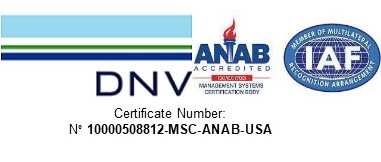Members,
U.S. Army Corps of Engineers (USACE) EMERGENCY RESPONSE SALT WATER SILL OPERATIONS and UPDATED RIVER STAGE DETAILS:
The USACE confirmed that the sill as constructed is presently working to reduce the migration of the salt water wedge, the precipitation across the Mississippi River Basin is also producing higher river stages. The precipitation forecasts and river stage details are highlighted below.
The following update was recently provided by the USACE:
“Since construction of the saltwater sill to elevation -55 ft was completed on 22 Oct, we have been monitoring salinity. Measurements show no salinity flowing over the sill and the latest 28 day forecast shows river stages rising another foot in the next two weeks. Further construction of the sill is not anticipated over the next 4 weeks. We have temporarily released Weeks Marine (saltwater sill contractor), but the contract remains open which enables us to call the contractor back if necessary.”…
The Port of Greater Baton Rouge reduced the maximum draft recommendation to 41 feet based on low water levels within the Port’s area of responsibility, the low spots are not within the Ship Channel but mostly on the approaches to the berths from the Ship Channel. The Port of Greater Baton Rouge has widely distributed this information, that was supported by both the NOBRA and Federal Pilots and Big River Coalition as a prudent response to promote navigational safety.
Weeks Marine successfully completed the construction for the first targeted elevation, of the salt water sill (barrier) confirmed to between 55 feet and 51 feet (lowest point) on October 22, 2022. The barrier sill has been constructed to USACE approved elevations within acceptable limits as noted above at Mile 63.8 Above Head of Passes (AHP).
If the sill is constructed higher then maximum draft reductions would be expected with short notice (need to build higher unlikely).
THE DECISION TO BUILD ABOVE -52/51 FEET COULD PROMPT ADJUSTMENTS TO MAXIMUM DRAFT RECOMMENDATIONS UPRIVER FROM
MILE 63 ABOVE HEAD OF PASSES. (No draft reductions are expected below Mile 63 AHP.)
Sill Location (USACE): Sill Diagram Rendering with footnotes to explain below (USACE)
Please note the location in the diagram to the left, of the sill’s location below the freshwater intakes for the city of New Orleans in a USACE rendering (river chart) standard diagram.
The second diagram is a conceptual rendering of the salt water sill provided by the USACE (or an underwater levee). Both drawings are provided by the USACE to demonstrate the general outlay of the emergency response project. Please note a generic elevation (50 feet) is represented in the sill diagram, the actual range of the possible sill elevation is from -55 feet to -45 feet. Also please note the diagram is in essence oriented by the Mississippi River Freshwater Flow which in this case is shown from right to left.
Beyond that if the sill most be built higher it would most likely be in the range of 45 to 48 feet and would then require a maximum draft adjustment for all vessels transiting above Mile 63.8 AHP (unexpected at this time).
The graph below is reproduced from NOAA’s National Weather Service website and represents an experimental product to account for the complexity of accurately predicting long-range precipitation. This forecast projects stage levels based on expected precipitation for 2 days (top) and 16 days (bottom) and was developed within the North American Ensemble Forecast System (NAEFS) computer model and highlights Quantitative Precipitation Forecasts (QPF). Along with the forecasts, a shaded area is also provided to indicate uncertainty for the forecast each day in the future. These plots are experimental and not an official forecast product.
The 24- and 48-hours predictive precipitation charts above are reproduced from the National Weather Service, there is much needed precipitation happening or forecasted for areas of both the Lower and Upper Mississippi Basin, another over South Texas and a system expected to move from the Northwest to Midwest. Increases to river gages continue to have positive impacts on stages level, as a rule of thumb a rise at Cairo (IL) takes approximately 20 days to reach New Orleans (Carrollton Gauge). The Big River Coalition has requested additional Mississippi River Stage and Precipitation forecasts NOAA and the NWS and will share new details as received.
The information provided below is shared by NOAA’s National Water Center (Tuscaloosa, AL) the BRC will continue to monitor these details and has asked for additional Mississippi River Basin reports. The quoted material below is reproduced from today’s prototype from the National Hydrologic Discussion:
“Southeast US Coast:
Moderate to heavy rainfall (WPC QPF) on days 4 – 6 (Wed – Fri) along the Southeast US coast from east central FL to the Carolinas is associated with a disturbance that may develop in the southwest Atlantic Ocean early this week. Streamflows remain elevated along with minor to moderate river flooding along the Upper St. Johns River, making this area vulnerable to additional rainfall. Recent runs of the NWM MRF have been signaling high water flows across central FL and portions of the Carolinas. The latest run of the MRF shows high water arrival times by day 5 (Thu) across both areas.
Additionally, both the NWM MRF and MMEFS suggest renewed rises on the St. Johns River late this week. Regardless of development of the system and any rainfall received, coastal flooding will also be a concern for these areas as early as day 2 (Mon).”
MISSISSIPPI RIVER STAGE UPDATES:
The Carrollton Gage (New Orleans) reading at 0800 hours today was 2.8 feet with a 24-hour change of + 0.26 feet. The National Oceanic and Atmospheric Administration’s (NOAA) National Weather Service Extended Streamflow Prediction (28-Day) for the Carrollton Gage issued today forecast stages to continue a slow rise to 3.7 feet on November 23 and then to begin a slow fall to 3.0 feet on December 4 (2022).
The precipitation forecast in the long range models only account for future precipitation 48-hours in advance. The increased precipitation has indeed added much needed water into the Mississippi River and Tributaries and is helping in the battle to halt the salt water wedge from advancing upriver without increasing the height of the salt water sill. The USACE confirmed this position early this week and this remains the status quo, indications continue to indicate the barrier sill will not have to be built any higher.
*There is a screen shot attached to this report from a weather application often utilized by the Coalition to monitor weather conditions, the diagram details the locations of the referenced weather systems expected to add precipitation across the Mississippi River Basin. (Ventusky).
With You,
Sean
Sean M. Duffy, Sr.
Executive Director




